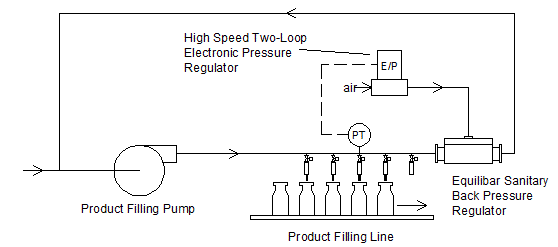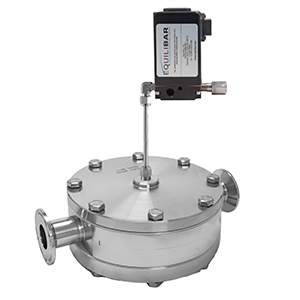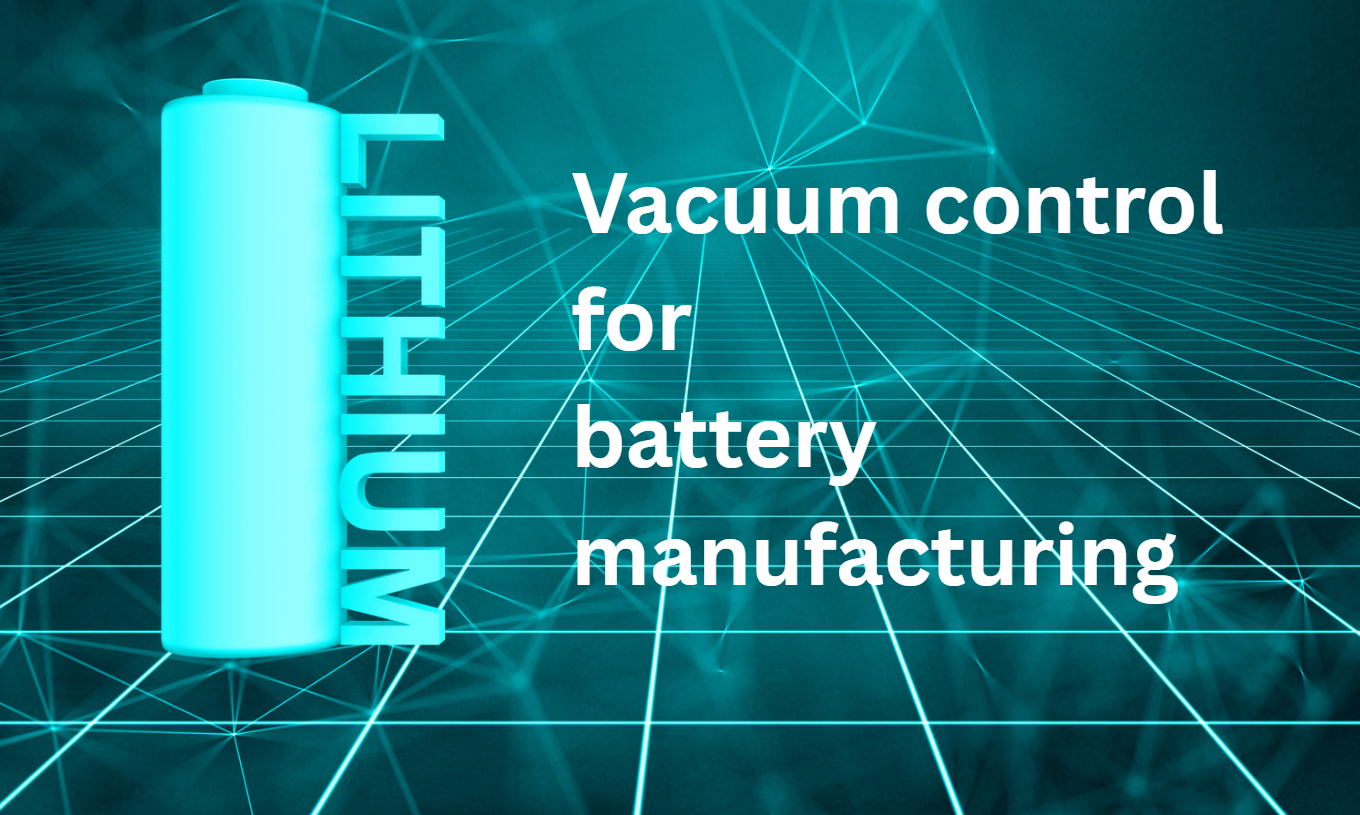One key challenge in product filling machines is to handle the rapid change in flow rate during the start-up and shut down of a filling line. For example, if a filling line has 20 parallel nozzles, it might take several seconds during machine start-up for each of the positions to become active as empty containers gradually begin advancing through the machine. The opposite situation occurs at machine shut-down as the last container works its way through the positions. During these ramps up and down, the header flow rate can vary dramatically.

Variable frequency pump drives (VFD) are very useful for controlling pressure under varying conditions, but unfortunately require several seconds to change speeds. These VFD drives are not always able to handle all the challenges that are presented by these filling applications.
Other challenges are presented to the process engineer when viscous fluids or non-Newtonian fluids are involved. These systems need to be designed to process high flow rates of Clean-In-Place chemicals as well as relatively lower flow rates of viscous materials.
High Speed Pressure Control for Filling Machines
For challenging filling applications, one solution is to install a high speed back pressure regulator near the exit of the nozzle manifold, as shown in the schematic above.
The primary requirement of this approach is to install a circulation line back to the inlet of the pump. While this is sometimes complicated, the advantages can be significant for applications experiencing persistent pressure fluctuations.
The Equilibar back pressure regulator (BPR) is a high precision device that responds in approximately 1 mS to pressure changes at its inlet. The speed and precision are driven by the use of compressed air as a 1:1 pilot signal on the top of dozens of parallel orifices. (how it works)
If the BPR can be mounted extremely close to the manifold, it may be possible to run with a fixed air pressure pilot. For example, to control the manifold at 2 bar, a 2 bar air signal would be supplied to the dome of the BPR.
However, for many applications, such as viscous fluids or installations where the BPR is not located directly at the manifold, a two-loop electronic pressure controller would be recommended (as shown). This closed-loop approach assures that the manifold pressure sensor sees the desired pressure by making slight adjustments as needed to the pilot pressure on the dome to offset friction effects throughout the system.
Example: Hot Fill Beverage Filling
Hot Fill beverage filling is an option for bottling juice and other acidic beverages that eliminates the need for preservatives and chemical decontamination. In this process, the beverage is heated to a pasteurization temperature then added to the container hot. The heat from the beverage decontaminates the inner surface of the beverage container as it is filled. The container is tipped sideways to allow the hot beverage to decontaminate the top of the container too. The container and its contents are then cooled, preserving the nutritional value of the juice and creating a vacuum inside the container which prevents microbial growth. This efficient bottling method results in more nutritious juice with a longer shelf life.
Hot Fill is employed using glass and plastic beverage containers, but in the case of plastic containers the cooling step can present challenges because the vacuum has the potential to collapse the plastic. Hot Fill machines need to be designed to take this into account. For instance, in the new ThermoShape™ Hot Fill machine, the container is designed to collapse during cooling and then is restored to shape in the final step by adding just enough heat.
In this process where heat transfer is inherent in the design, it is important to accurately control the product flow so that each container is filled to precisely the same level without overfilling or under filling. The juice flow rate is constantly fluctuating due to nozzles turning on and off as bottles are fed through the high-speed filling machine, so flow control is challenging. Installing a high speed Equilibar back pressure regulator near the exit of the nozzle manifold can be an excellent solution to this challenge.
Equilibar engineers are highly experienced at designing systems for this type of demanding application. Contact an engineer today to discuss your product filling challenge.
The Equilibar FD06 Sanitary Back Pressure Regulator with High Speed Electronic Controller



